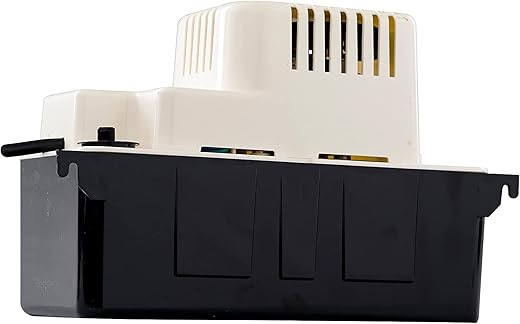









Understanding Distribution Pumps: The Heart of Fluid Movement
When it comes to the world of fluid dynamics, distribution pumps play a pivotal role. They are the unsung heroes that ensure fluids—whether water, oils, or chemicals—are moved efficiently from one location to another. Imagine a busy highway, where vehicles (in this case, fluids) must reach their destinations without delay. Distribution pumps are the traffic signals and roadways that facilitate this movement. In this article, we will explore the intricacies of distribution pumps, their types, applications, and why they are essential in various industries.
What is a Distribution Pump?
At its core, a distribution pump is a mechanical device designed to move fluids through a system. Think of it as the engine of a car; without it, nothing moves. These pumps can handle different types of fluids, including those that are viscous, corrosive, or contain solids. Their primary function is to maintain a steady flow of fluid, ensuring that systems operate smoothly and efficiently.
Types of Distribution Pumps
Distribution pumps come in various shapes and sizes, each tailored for specific applications. Here are some of the most common types:
Centrifugal Pumps
Centrifugal pumps are the most widely used distribution pumps. They operate using a rotating impeller, which creates a centrifugal force that pushes the fluid outward. This type of pump is ideal for low-viscosity fluids and applications requiring high flow rates. Picture a merry-go-round; as it spins faster, it flings the riders outward—this is how centrifugal pumps work!
Positive Displacement Pumps
Unlike centrifugal pumps, positive displacement pumps move fluid by trapping a fixed amount and forcing it into the discharge pipe. They are particularly effective for high-viscosity fluids and applications where precise flow control is necessary. You can think of positive displacement pumps as a set of gears: turn them, and they pull in a specific amount of fluid with each cycle.
Diaphragm Pumps
Diaphragm pumps utilize a flexible diaphragm to create a vacuum that draws in fluid and then pushes it out. They are often used in industries where contamination must be avoided, such as food and pharmaceuticals. Imagine a balloon being squeezed; as you press it, the air (or fluid, in this case) is expelled. That’s how diaphragm pumps operate!
Applications of Distribution Pumps
The versatility of distribution pumps allows them to be used across various industries. Here are a few notable applications:
Water Supply and Treatment
In municipal water systems, distribution pumps are crucial for maintaining water pressure and ensuring that clean water reaches homes and businesses. They are involved in everything from treating wastewater to distributing potable water.
Oil and Gas
In the oil and gas industry, distribution pumps are vital for moving crude oil and other hydrocarbons from extraction sites to refineries and distribution centers. Their ability to handle high-viscosity fluids makes them indispensable in this sector.
Chemical Processing
Chemical manufacturers rely on distribution pumps to move corrosive substances safely through their processes. The right pump can withstand harsh chemicals, ensuring that production runs smoothly and safely.
Choosing the Right Distribution Pump
Selecting the appropriate distribution pump for your needs can feel overwhelming, but it doesn’t have to be. Consider the following factors:
1. **Fluid Characteristics**: What type of fluid will you be pumping? Is it viscous, corrosive, or contains solids?
2. **Flow Rate**: How much fluid do you need to move, and how quickly?
3. **Pressure Requirements**: What is the required discharge pressure for your system?
4. **Energy Efficiency**: Look for pumps that offer energy-efficient options to reduce operational costs.
By evaluating these factors, you can make an informed decision that meets your specific requirements.
Maintaining Your Distribution Pump
Proper maintenance of your distribution pump is crucial to ensure its longevity and efficiency. Here are some tips to keep your pump in top shape:
– **Regular Inspections**: Check for leaks, unusual noises, or vibrations.
– **Clean Filters**: Ensure that filters are clean and functioning to prevent clogging.
– **Lubrication**: Follow the manufacturer’s guidelines for lubrication to keep moving parts operating smoothly.
– **Monitor Performance**: Keep an eye on flow rates and pressure to catch any issues early.
Like a car, your distribution pump needs regular check-ups to perform at its best!
Conclusion
In conclusion, distribution pumps are essential components in various industries, facilitating the movement of fluids efficiently and safely. By understanding their types, applications, and maintenance requirements, you can ensure that your systems run smoothly. Whether you’re in construction, manufacturing, or water treatment, the right distribution pump can make all the difference. So, the next time you turn on a tap or see oil being transported, remember the vital role these pumps play in our daily lives.
FAQs
What is the lifespan of a distribution pump?
The lifespan of a distribution pump varies depending on its type, usage, and maintenance. Generally, with proper care, a pump can last anywhere from 5 to 20 years.
Can I use a centrifugal pump for viscous fluids?
While centrifugal pumps can handle some viscous fluids, they are not the best choice for highly viscous materials. Positive displacement pumps are typically recommended for such applications.
How do I know if my distribution pump needs replacement?
Signs that your distribution pump may need replacement include frequent breakdowns, decreased performance, unusual noises, or visible wear and tear. Regular inspections can help identify these issues early.
